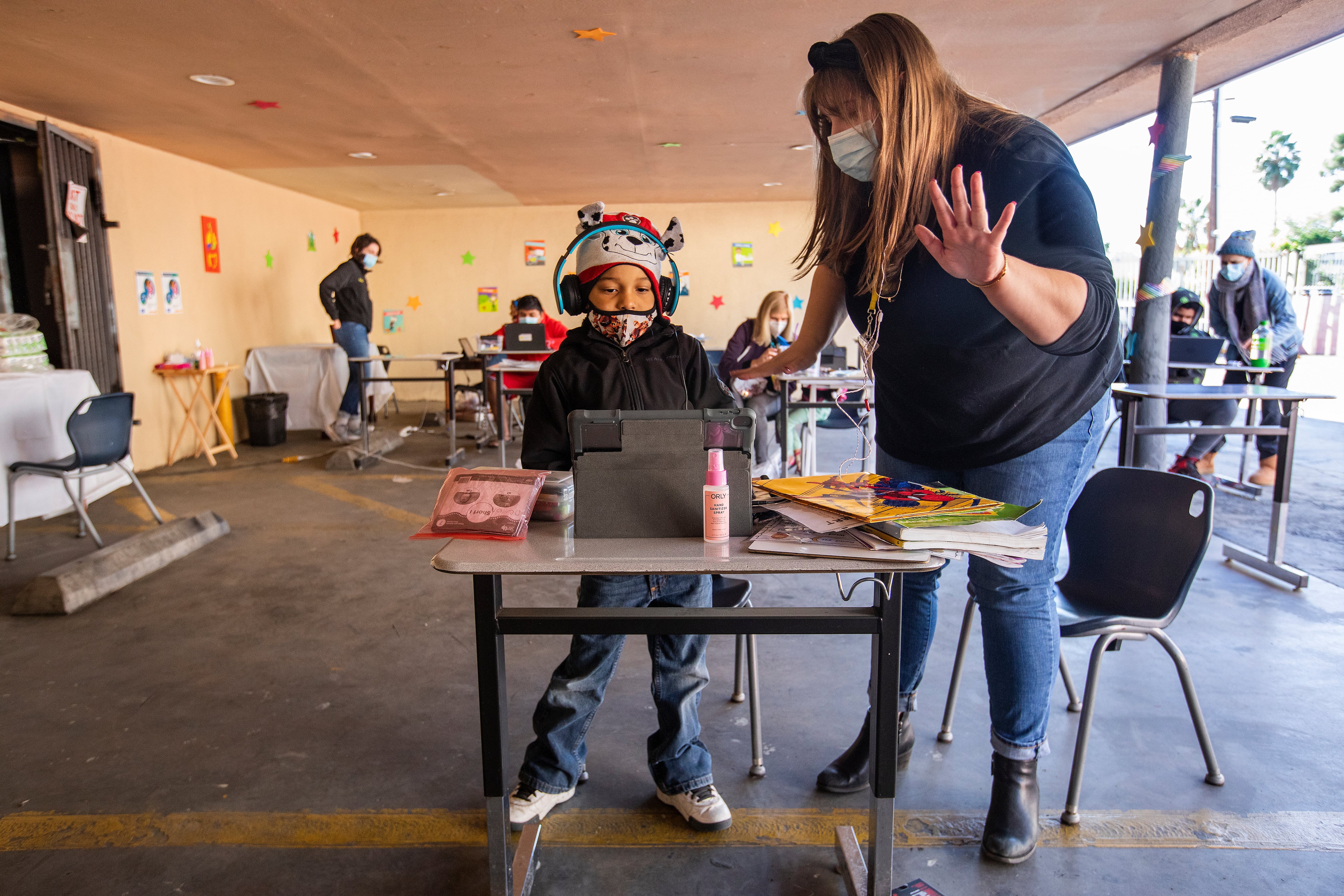Across the country, school staff are reporting a “shocking drop” in the number of students who are identified as homeless and are therefore entitled to critical support from their school.
Advocates worry that means many children are going without access to things like food, health care referrals, and laundry services. They also worry that could indicate many students aren’t enrolled in school at all right now.
In Hillsborough County, Florida, one of the country’s largest school districts, the number of students identified as homeless is down by a third, or 754 students. In Wake County, North Carolina, there are 335 fewer homeless students, a 13% decrease. And in Omaha, Nebraska, there are 296 fewer homeless students, a decrease of 46%.
The vast majority of school-based liaisons who work with these students say the declines are not the result of shrinking need in their communities, though eviction moratoriums have helped some families. Instead, they reflect the reality that staff periodically check on whether students are eligible for services, and school staff have struggled to reach families and students during a pandemic that has shuttered school buildings and reduced in-person contact between students and school staff.
Those are the findings of a new report published last week by SchoolHouse Connection, a national nonprofit that advocates on behalf of homeless youth, and Poverty Solutions, an initiative of the University of Michigan.
“We’re very concerned that in the present moment, when children are not identified as experiencing homelessness, they may not be connected to education or any kind of support,” said Barbara Duffield, the executive director of SchoolHouse Connection.
That’s the worry in the short term, but there are possible long-term consequences, too.
“The concern is that these losses pile up,” Duffield said. “Even though we know children are amazingly resilient, every day that they go without education, the further they fall behind, the more likely they are to disengage, to drop out, and to continue to experience homelessness as adults.”
The report is based on survey responses from more than 1,400 school liaisons who work with students experiencing homelessness across 49 states, gathered in September and October. While it’s not a nationally representative sample, it is perhaps the most comprehensive look to date at how the pandemic has complicated the already difficult job of locating and helping homeless students and their families. Earlier this year, some school staff feared students would “fall off the radar” with the loss of in-person school.
About four in 10 school liaisons reported that the number of students identified as homeless in their school district had decreased this fall, compared with last year. Three in 10 reported an increase in homeless students, while the rest reported no change.
Among liaisons who reported a count of homeless students for both years — which was many, but not everyone, in the sample — there was a 28% decline in homeless students since last fall. That’s a conservative estimate, one researcher said, and if it held true nationally, would amount to 423,000 fewer homeless students being identified nationwide.
Even that is likely an underestimate of the problem, the report’s authors say, because before the pandemic, there was evidence that schools were not identifying all children who qualify for services.
Among liaisons who reported a reduction in the number of students who are experiencing homelessness, 70% attributed that to an inability to identify students when school buildings were closed and students were learning remotely.
There were other challenges, too. Some families moved, or didn’t respond to phone calls, emails, or home visits, so liaisons didn’t know where they were. A liaison in Michigan said many children had previously been identified when getting help with transportation, but now that students weren’t riding buses “that step is not occurring.”
“Families not calling us back or responding to email; families feeling disconnected to school; online learning not going well and parents avoiding our calls… so many, many direct housing service providers are still working remotely and not connecting with clients who are our parents,” wrote one liaison in Washington state. “Each of these factors has come into play.”
Though many school-based liaisons who work with students experiencing homelessness are working hard to stay connected with families during the pandemic, some districts are dealing with high turnover among staff who help these students, or high caseloads. And while some school districts have made a point of prioritizing students who are experiencing homelessness when distributing devices and helping with internet access, some students are still going without. New York City, for example, has promised to get Wi-Fi into its family shelters, but the process is months from completion.
Under normal circumstances, Duffield notes, it’s not just school liaisons, but teachers, coaches, bus drivers, and enrollment staff who help spot students in need of support.
Now, especially, “It can’t be just the school that helps identify children and gets them connected,” she said. “It’s going to take efforts beyond the school walls.”
The findings come as COVID cases are soaring in many parts of the country and school districts that had planned to offer in-person instruction, or had been offering it, are pulling back.
“I think it’s going to exacerbate the problems that we’re already seeing,” said Jennifer Erb-Downward, a senior research associate at Poverty Solutions who worked on the report. “There will be more disconnect in terms of children not being able to participate. There will be more disconnect in terms of families not being able to access services that they need.”
Advocates are also worried about what will happen if unemployment benefits run out and temporary restrictions on evictions lift, as they’re scheduled to next month.
“If it expires during a point in time while a lot of learning is happening on a remote basis, what we’re going to see is a whole lot of families suddenly becoming homeless and no one being there to connect them to services, no one being there to help children access the supports they need,” Erb-Downward said.





